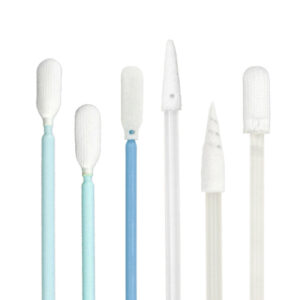 Introduction
Introduction
Cleanrooms are critical environments used in industries such as electronics, pharmaceuticals, and biotechnology, where even the tiniest particle or contamination can lead to product failure or compromised safety. To maintain the highest standards of cleanliness, cleanroom operators rely on specialized tools and materials, including cleanroom swabs. Among the various types available, cleanroom swabs with foam tips have emerged as indispensable tools for precise cleaning and contamination control. In this article, we will explore the significance of Cleanroom Swabs Foam and their role in maintaining cleanliness in sensitive environments.
Understanding Cleanroom Swabs Foam
Cleanroom swabs with foam tips are specifically designed for use in controlled environments where the removal of particles, residues, and other contaminants is paramount. The foam material used in these swabs is highly absorbent, ensuring efficient and effective cleaning. The foam is made from polyurethane, a synthetic material with a cellular structure that provides an excellent balance of softness and resilience.
One of the primary advantages of foam swabs is their ability to conform to irregular surfaces and clean hard-to-reach areas with precision. The open-cell structure of the foam allows it to trap and hold particles, preventing their redistribution during the cleaning process. Additionally, foam swabs are non-abrasive, minimizing the risk of surface damage while ensuring thorough cleaning.
Applications of Cleanroom Swabs Foam
Cleanroom swabs with foam tips find applications in a wide range of industries that require meticulous cleanliness. In the electronics industry, these swabs are extensively used during the manufacturing and assembly processes of delicate electronic components, such as printed circuit boards (PCBs). Foam swabs effectively remove dust, oils, fluxes, and other contaminants that can affect the performance and reliability of electronic devices.
The pharmaceutical and biotechnology sectors also rely on cleanroom swabs foam for critical tasks. These swabs are used to clean and maintain the sterile conditions necessary for drug manufacturing, laboratory research, and medical equipment assembly. The foam material, with its low particle generation and excellent solvent compatibility, ensures that sensitive environments remain free from unwanted residues and contaminants.
Cleanroom swabs with foam tips are also vital in aerospace, optics, and automotive industries, where precision cleaning is crucial for maintaining product quality. The foam’s exceptional cleanliness, combined with its ability to hold and release solvents evenly, makes it an ideal choice for cleaning optical lenses, camera sensors, and other delicate surfaces.
Best Practices for Using Cleanroom Swabs Foam
To maximize the effectiveness of cleanroom swabs with foam tips, it is essential to follow some best practices. Firstly, choose swabs with foam heads that are compatible with the specific solvents or cleaning agents used in your industry. This ensures optimal cleaning performance without the risk of contamination.
Secondly, use a fresh swab for each cleaning task to prevent cross-contamination. Dispose of used swabs properly, following industry-specific guidelines for waste disposal.
Thirdly, handle swabs with care to avoid introducing external contaminants. Use cleanroom-compatible packaging and ensure that swabs are stored in a controlled environment to maintain their cleanliness.
Conclusion
Cleanroom swabs with foam tips play a crucial role in maintaining the cleanliness and precision required in controlled environments. Their unique properties, such as high absorbency, softness, and non-abrasiveness, make them the preferred choice for cleaning delicate surfaces and hard-to-reach areas. With their extensive applications across industries such as electronics, pharmaceuticals, biotechnology, aerospace, optics, and automotive, cleanroom swabs foam have become indispensable tools for achieving the highest standards of cleanliness. By following best practices and selecting the appropriate foam swabs for specific tasks, operators can ensure optimal cleaning performance, minimize contamination risks, and uphold the integrity of their products and processes.



